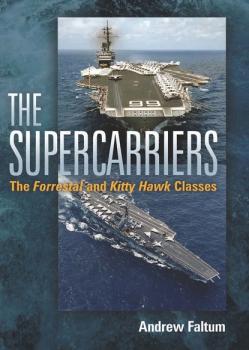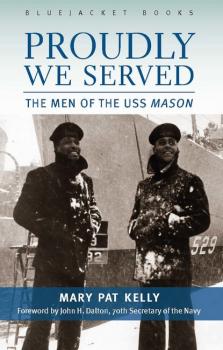ТОП просматриваемых книг сайта:
Прочая образовательная литература
Различные книги в жанре Прочая образовательная литература, доступные для чтения и скачиванияАннотация
The two-volume Chief of Staff examines the history, development, and role of the military duty position of the chief of staff. Many books have studied history's great commanders and the art of command. None have focused exclusively on the chief of staff that key staff officer responsible for translating the ideas of the commander into practical plans that common soldiers can execute successfully on the battlefield. In some cases, it is almost impossible to think of certain great commanders without also thinking of their chief of staff. Napoleon's chief of staff Berthier and Eisenhower's chief of staff Bedell Smith are two examples that are profiled in this work. Zabecki and his collaborators examine the history, development, and role of the chief of staff primarily through profiles of the most important practitioners of the art. These books are published in cooperation with the Association of the United States Army.
Аннотация
China's turn toward the sea is evident in its stunning rise in global shipbuilding markets, its expanding merchant marine, its wide reach of offshore energy exploration, its growing fishing fleet, and its increasingly modern navy. This comprehensive assessment of China's potential as a genuine maritime power is both unbiased and apolitical. Unlike other works that view China in isolation, it places China in a larger world historical context. The authors, all authorities on their historical eras, examine cases of attempted maritime transformation through the ages, from the Persian Empire to the Soviet Union, and determine the reasons for success or failure.
Аннотация
The Supercarriers is a comprehensive historical overview with extensive photos, maps, drawings, and operational detail, including all air wing deployments. It covers all of the Forrestal class supercarriers and the follow-on ships, which are basically of the same design.The book is heavily illustrated with over one hundred illustrations and maps covering the Western Pacific, Vietnam, Mediterranean, Middle East, Indian Ocean, and Caribbean. The front end paper illustration shows the Saratoga as representative of the Forrestal class with port and starboard profiles and an overhead view. The rear end paper displays similar views of the Constellation as part of the Kitty Hawk class.
Аннотация
Few Americans know the history-changing story of the USS Mason, a World War II warship manned by an African-American crew that served as a role model for the integration of U.S. Navy ships. At a time when most blacks in the Navy were relegated to mess duties, the crew of the USS Mason escorted six convoys across the perilous North Atlantic, from the weeks leading up the D-Day invasions until V-E day in 1945. As part of the so-called Hunter-Killer groups that defeated the German U-boats, they helped win the Battle of the Atlantic. Proudly We Served: The Men of the USS Mason tells the story of these brave men and their contributions to the Allied victory. Their success had a direct impact on President Harry S. Truman’s decision to integrate all of America’s armed forces after the war. Recommended in 1944 for a commendation for their heroic actions during a violent storm, the Mason sailors finally received that commendation in 1995, after the publication of this book in hardcover and the release of a companion documentary. The men and ship have been further honored by the Navy’s decision to name a new destroyer (DDG 87) after the Mason and propagate its proud heritage into the twenty-first century.
Аннотация
No Room for Mistakes is a thoroughly researched account of British and Allied submarine warfare in north European waters at the beginning of World War II. Haarr has compiled research from a wide range of primary sources to create one of the most readable, comprehensive accounts of early war submarine activities. With detailed, accurate maps and many previously unpublished photographs, No Room for Mistakes documents the birth of a new kind of war and the courage of the men who learned to fight it.
Аннотация
This book is a long-awaited biography of one of the Navy’s last surviving World War II aces, and one of the Navy’s most respected officers of any period. Following a typical American mid-western boyhood, Whitey Feightner, like so many of his generation, was in the van of the huge group of young men thrust into World War II. Like some of his generation, Whitey had logged flight time in civilian aircraft before signing up to fly for the Navy. Upon receiving his commission and his wings of gold, he was signed to a fighter squadron and soon found himself in combat with the likes of Jimmy Flatley and Butch O’Hare, two leaders who imparted their own brand of flying skill and leadership on the young ensign. Whitey flew through many of the war’s most hectic and dangerous campaigns, such as Guadalcanal and the Marianas, gaining nine official kills. There were times he should not have returned, but his own skill and positive outlook helped him make it through all the dangers.After the war, and now a member of the regular Navy, Whitey was assigned to several of the Navy’s most secret and action-filled projects down at Patuxent River, Maryland. He flew planes like the F7U Cutlass, AD Skyraider, F9F Banshee and Cougar, helping to develop these legendary fighters as they joined the fleet. Whitey also was assigned to the early teams of the Blue Angels demonstration unit. He is one of only two men who flew the radical F7U Cutlass in Blue Angels colors.Returning to the fleet in command of a squadron, and later of an air group, Feightner continued to develop fighter tactics while patrolling the oceans in defense of America and its allies. In between tours at sea, Feightner served in the Pentagon dealing with all the personalities and political turmoil of the time while trying to bring Naval Aviation into the future. It wasn’t easy. Working with such luminaries as Hyman Rickover and Elmo Zumwalt was not for the feint-hearted, and even Whitey did not come away unscathed. Yet, through it all, he kept the smile and affable demeanor that characterized this rare and highly skilled naval aviator. His life story could serve as a model for any young aviator to follow.
Аннотация
Ana Montes appeared to be a model employee of the Defense Intelligence Agency (DIA). Known to her coworkers as the Queen of Cuba, she was an overachiever who advanced quickly through the ranks of Latin American specialists to become the intelligence community's top analyst on Cuban affairs. But throughout her sixteen-year career at DIA, Montes sent Castro some of America's most closely guarded secrets and at the same time influenced what the United States thought it knew about Cuba. When she was finally arrested in September 2001, she became the most senior American intelligence official ever accused of operating as a Cuban spy from within the federal government. Unrepentant as she serves out her time in a federal prison in Texas, Montes remains the only member of the intelligence community ever convicted of espionage on behalf of the Cuban government.This inside account of the investigation that led to her arrest was written by Scott W. Carmichael, the DIA's senior counterintelligence investigator who persuaded the FBI to delve deeper into Montes activities. Although Montes did not fit the FBI's profile of a spy and easily managed to defeat the agency's polygraph exam, Carmichael became suspicious of her activities and, with the FBI, over a period of several years developed a solid case against her. Here he tells the story of that long and ultimately successful spy hunt. Carmichael reveals the details of their efforts to bring her to justice, offering readers a front-row seat for the first major U.S. espionage case of the twenty-first century. She was arrested less than twenty-four hours before learning details of the U.S. plan to invade Afghanistan post-September 11. Motivated by ideology and not money, Montes was one of the last «true believers» of the Communist era. Because her arrest came just ten days after 9/11, it went largely unnoticed by the American public. This book calls attention to the grave damage Montes inflicted on U.S. security–Carmichael even implicates her in the death of a Green Beret fighting Cuban-backed insurgent in El Salvador and the damage she would have continued to inflict had she not been caught.
Аннотация
Published to coincide with the centennial celebration of U.S. Navy aviation, this book details the history of U.S. Navy aviation from its earliest days, before the Navy s first aircraft carrier joined the fleet, through the modern jet era marked by the introduction of the F-18 Hornet. It tells how naval aviation got its start, profiles its pioneers, and explains the early bureaucracy that fostered and sometimes inhibited its growth. The book then turns to the refinement of carrier aviation doctrine and tactics and the rapid development of aircraft and carriers, highlighting the transition from propeller-driven aircraft to swept-wing jets in the period after World War II. Land-based Navy aircraft, rotary-wing aircraft, rigid airships, and balloons are also considered in this sweeping tribute.
Аннотация
The torpedo was the greatest single game-changer in the history of naval warfare. For the first time it allowed a small, cheap torpedo-firing vessel—and by extension a small, minor navy—to threaten the largest and most powerful warships afloat. The traditional concept of seapower, based on huge fleets of expensive capital ships, required radical rethinking because of this important naval weapon. This book is a broadranging international history of the weapon, tracing not only its origins and technical progress down to the present day, but also its massive impact on all subsequent naval wars. Torpedo contains much new technical information that has come to light over the past thirty years and covers all of the improved capabilities of the weapon. Heavily illustrated with photos and technical drawings this is a book no enthusiast or historian can afford to miss.
Аннотация
Strike warfare is a term that is rarely used in the popular media even though reports of conflicts often describe its application or effects. Those brief snippets of information seldom provide a complete picture of what is happening at the time, and they almost never explain the operational or technical background that influences how such actions occur. This leaves the average reader or viewer with an information void, a gap in understanding.This book is intended to fill that gap. It does so in a logical and methodical fashion, building the picture piece by piece using easily understandable language. It begins with a discussion of the more newsworthy side of the subject, strike warfare operations. All of the key elements are addressed: targets, defenses, resources, and the several steps required to prosecute an attack. The book’s goal is to eliminate the uncertainty, the mystery and the outright fiction that sometimes exists in popular versions of the story. The second half of the book deals with an even less understood part of the subject, the development of strike weapons. The average citizen may occasionally hear of cost overruns, development test failures or some other negative aspect of military development programs, but there is hardly any background information available to the American taxpayer on how such programs function in general. Again, the book aims to correct a deficiency with respect to an accurate account of how strike weapons are actually developed. The entire development and life cycle is described, step by step, at the summary level. The author then closes with some thoughts about lessons learned and trends for the future. This is recommended reading for anyone with an interest in or a connection with strike warfare or strike weapons development. It should prove helpful to military or civilian newcomers to the field, members of the news media, and legislators or members of their staff dealing with military matters. But first and foremost, it was written to provide the average American taxpayer a better understanding of an important and powerful military capability.










